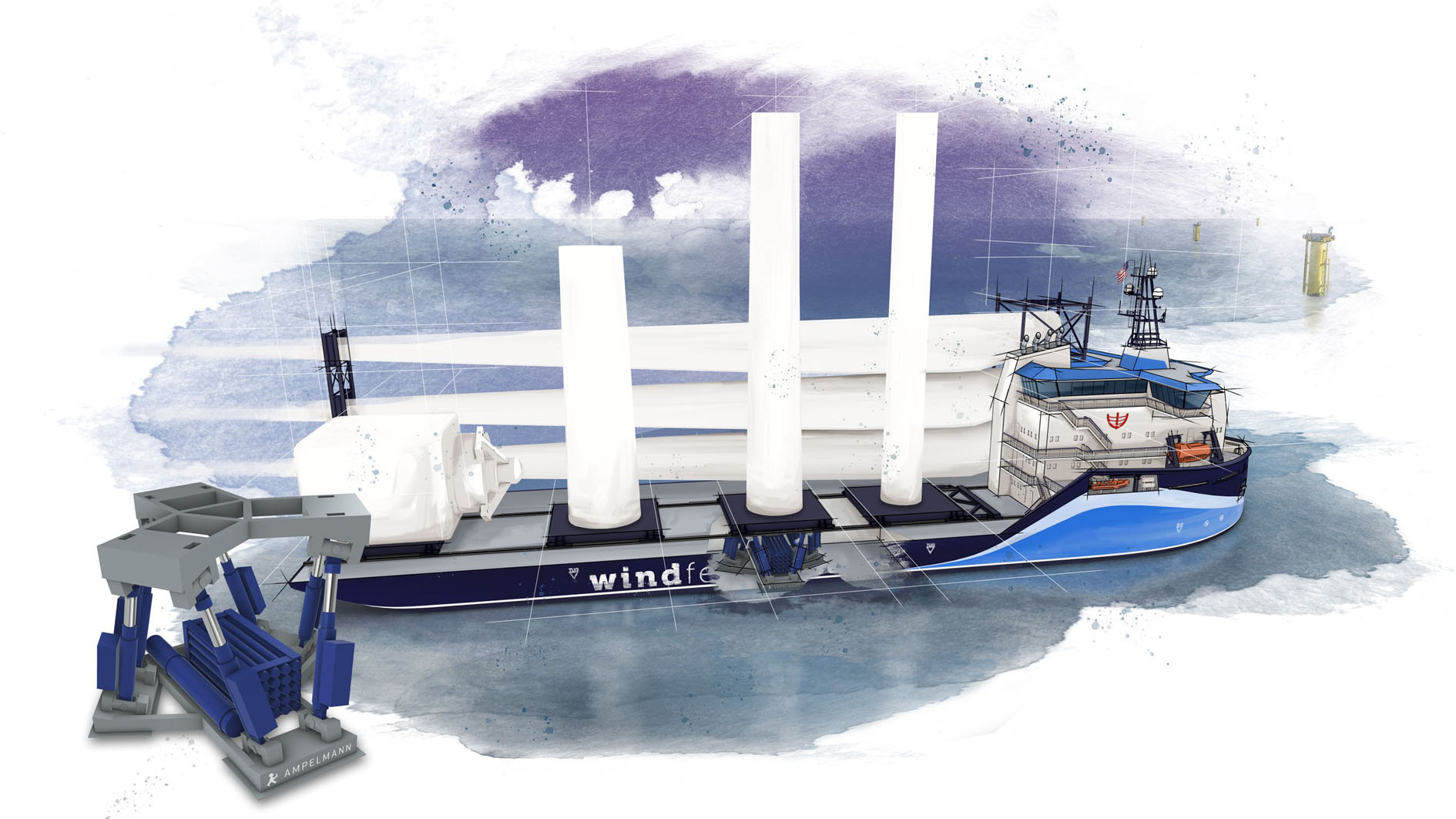
Offshore wind feeder vessel design revealed by Ampelmann and C-Job Naval Architects

Artist impression of the offshore feeder vessel (Source: C-Job Naval Architects)
Ampelmann and C-Job Naval Architects have joined forces to develop an offshore wind feeder vessel concept with motion compensation technology. According to the companies, it will be specifically suited for the rigorous demands of operating off the east coast of the United States of America.
The concept design combines the expertise of Ampelmann, the Dutch offshore access provider, and independent ship design company C-Job Naval Architects. Together they say they have created a viable design in response to the need to support the construction and logistics of offshore wind farms in the United States under the Jones Act. The offshore wind feeder vessel has an L-shaped superstructure. This enables the transport of all wind turbine components, including the blades, while keeping the ship itself relatively compact minimising construction and operational costs. To maximise workability and allow for safe lifting of the components, the feeder vessel has a specially designed motion compensation system by Ampelmann.
The system uses Ampelmann’s core technology to stabilise the components of the wind turbine generator (WTG) in six degrees of freedom and is designed for safe lifting operations in sea states up to 2.5m significant wave height. The compensator is positioned close to the vessel’s centre where it can compensate all vessel motions and allows for continued operations – even in adverse weather conditions – throughout the year, Ampelmann said in a statement. The motion-compensated wind feeder vessel is designed to provide maximum efficiency and workability during the construction of an offshore wind park. The conventional way of working is that the installation vessel would transport the components and then do the installation of the turbines, the partners noted. However, this is an inefficient use of the wind turbine installation vessel (WTIV) and in the case of foreign vessels not allowed by the Jones Act. With this feeder concept - which is envisioned to be a series - the turbine components are brought to the installation site by the feeder vessel. With two or more vessels per project, this allows the WTIV to focus on the installation of the turbines and ensures operations can continue at all times.
